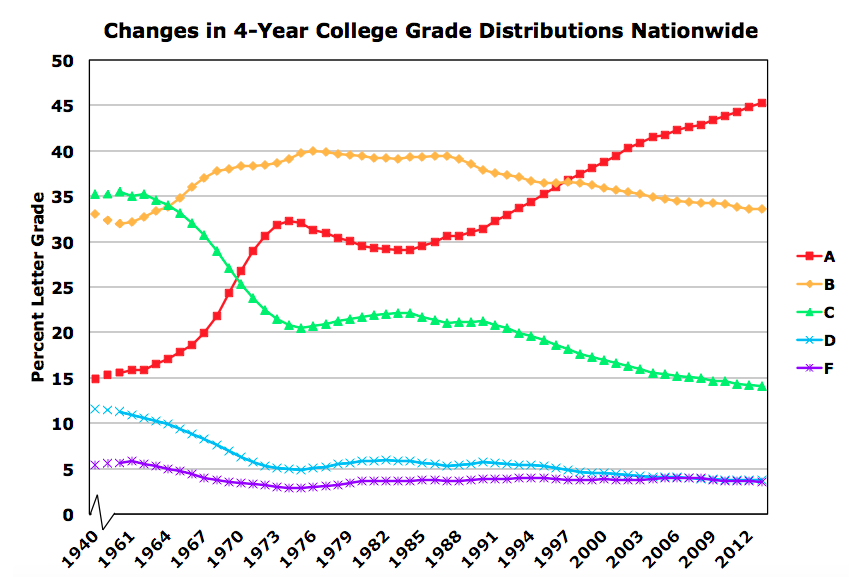Kerby Anderson
You have probably been hearing about the phenomenon of grade inflation for many years. It’s much worse than you might imagine. A recent report tells is all: “Everyone gets an A? College grade inflation spiking.”
To make the point, I posted the graph of college grade distributions nationwide on my Facebook page and on Pinterest. The comments from people who saw the graph are very interesting. From the 1960s, you notice that the percentage of A grades increase while the percentages of B and C grades decrease.
The first rise in an A grade takes place in the 1960s and 1970s. Grade inflation began then during the “Vietnam era.” Professors gave out higher than deserved grades back then to young men so they would be able to keep their student deferment and not be drafted to serve in the Vietnam War.
By the end of the 1970s, the A grade inflation dropped for a short period of time. Since then it has steadily increased to the current level today. More than 45 percent of all grades given to college students are an A grade. By comparison, only 15 percent received an A grade back in the 1960s.
The assumption is that with college education becoming more expensive, schools may now feel the need to reward the investment with an A grade. It may not be deserved, but it is expected. This is what many have started to call the “student as consumer era.” Many of these professors go along with the fiction that students are working hard by participating in class and writing impressive papers.
There are many problems with the mindset of “everyone gets a trophy.” Students are rewarded for substandard work with an A grade. And professors are no longer making any distinctions between outstanding students and mediocre students. In the end, college grades are having less and less significance.
 Listen Online
Listen Online Watch Online
Watch Online Find a Station in Your Area
Find a Station in Your Area









 Listen Now
Listen Now Watch Online
Watch Online
